Mitsubishi ASX vs Vauxhall Grandland – Differences & prices compared
Compare performance, boot space, consumption and price in one view.
Find out now: which car is the better choice for you – Mitsubishi ASX or Vauxhall Grandland?
The Mitsubishi ASX (SUV) comes with a Petrol, Petrol MHEV or Full Hybrid engine and Manuel or Automatic transmission. In comparison, the Vauxhall Grandland (SUV) features a Electric or Petrol MHEV engine with Automatic transmission.
When it comes to boot capacity, the Mitsubishi ASX offers 484 L, while the Vauxhall Grandland provides 550 L – depending on how much space you need. If you’re looking for more power, decide whether the 158 HP of the Mitsubishi ASX or the 325 HP of the Vauxhall Grandland suits your needs better.
In terms of consumption, the values are 4.60 L per 100 km for the Mitsubishi ASX, and 16.90 kWh5.50 L for the Vauxhall Grandland.
Price-wise, the Mitsubishi ASX starts at 20600 £, while the Vauxhall Grandland is available from 31200 £. Compare all the details and find out which model fits your lifestyle best!
Mitsubishi ASX
The Mitsubishi ASX presents itself as a compact crossover that combines practicality with style. Its sleek design and versatile interior make it an appealing choice for both urban and rural settings. With a focus on providing a comfortable driving experience, the ASX also offers a range of modern features that enhance connectivity and safety.
details @ Mitsubishi
@ Mitsubishi
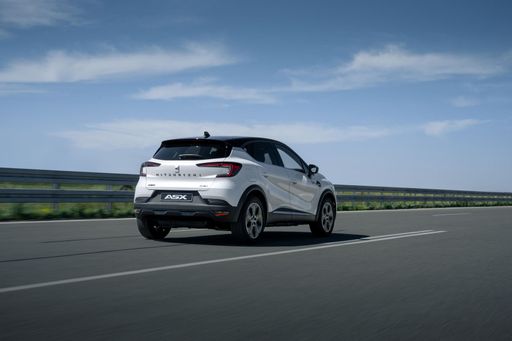 @ Mitsubishi
@ Mitsubishi
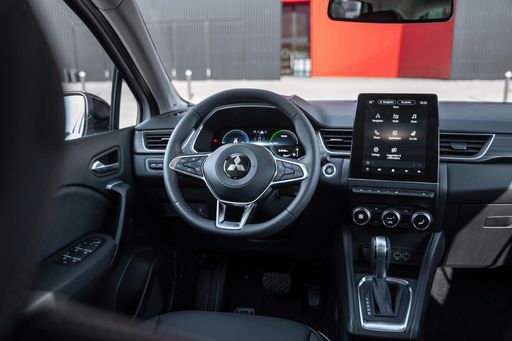 @ Mitsubishi
@ Mitsubishi
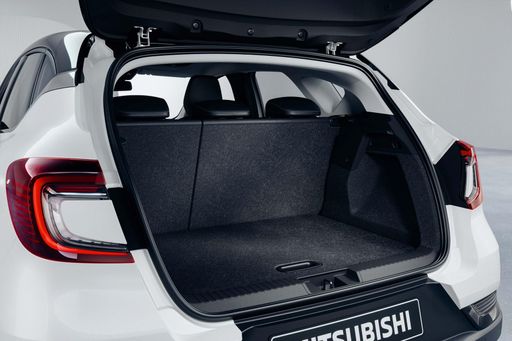 @ Mitsubishi
@ Mitsubishi
Vauxhall Grandland
The Opel Grandland offers a blend of style and practicality, making it an appealing choice for those seeking a versatile SUV. Its sleek design is complemented by a comfortable and spacious interior, providing an enjoyable driving experience for both short commutes and long journeys. Advanced technology and safety features enhance the overall appeal, ensuring drivers feel confident and connected on the road.
details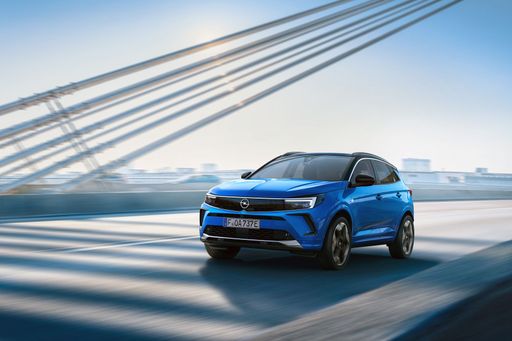 @ media.stellantis.com
@ media.stellantis.com
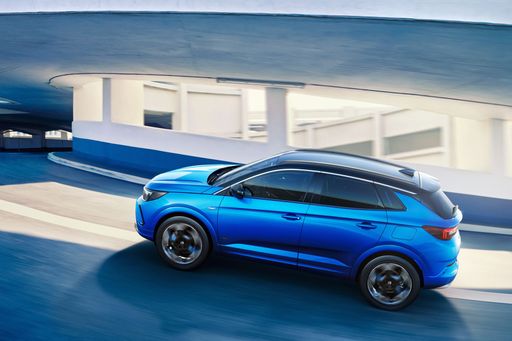 @ media.stellantis.com
@ media.stellantis.com
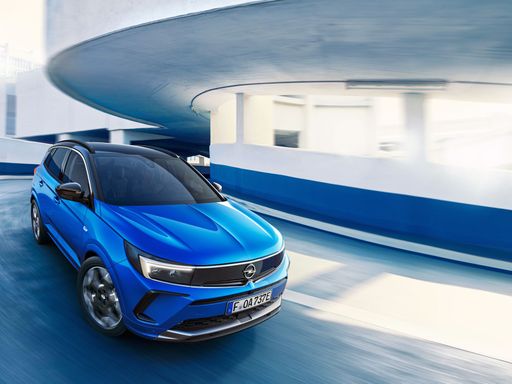 @ media.stellantis.com
@ media.stellantis.com
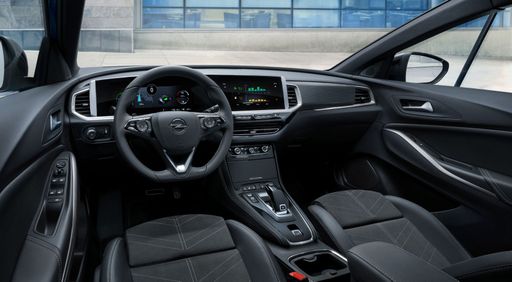 @ media.stellantis.com
@ media.stellantis.com

|

|
|
|
|
Costs and Consumption |
|
|---|---|
|
Price
20600 - 32000 £
|
Price
31200 - 51400 £
|
|
Consumption L/100km
4.6 - 6 L
|
Consumption L/100km
5.50 L
|
|
Consumption kWh/100km
-
|
Consumption kWh/100km
16.9 - 18 kWh
|
|
Electric Range
-
|
Electric Range
483 - 523 km
|
|
Battery Capacity
0.60 kWh
|
Battery Capacity
-
|
|
co2
105 - 135 g/km
|
co2
0 - 124 g/km
|
|
Fuel tank capacity
48 L
|
Fuel tank capacity
55 L
|
Dimensions and Body |
|
|---|---|
|
Body Type
SUV
|
Body Type
SUV
|
|
Seats
5
|
Seats
5
|
|
Doors
5
|
Doors
5
|
|
Curb weight
1296 - 1501 kg
|
Curb weight
1600 - 2325 kg
|
|
Trunk capacity
348 - 484 L
|
Trunk capacity
485 - 550 L
|
|
Length
4239 mm
|
Length
4650 mm
|
|
Width
1797 mm
|
Width
1934 mm
|
|
Height
1575 mm
|
Height
1665 mm
|
|
Payload
399 - 449 kg
|
Payload
425 - 570 kg
|
Engine and Performance |
|
|---|---|
|
Engine Type
Petrol, Petrol MHEV, Full Hybrid
|
Engine Type
Electric, Petrol MHEV
|
|
Transmission
Manuel, Automatic
|
Transmission
Automatic
|
|
Transmission Detail
Manual Gearbox, Dual-Clutch Automatic, Automatic Gearbox
|
Transmission Detail
Dual-Clutch Automatic, Reduction Gearbox
|
|
Drive Type
Front-Wheel Drive
|
Drive Type
Front-Wheel Drive, All-Wheel Drive
|
|
Power HP
91 - 158 HP
|
Power HP
145 - 325 HP
|
|
Acceleration 0-100km/h
8.5 - 14 s
|
Acceleration 0-100km/h
6.1 - 10.2 s
|
|
Max Speed
168 - 180 km/h
|
Max Speed
170 - 202 km/h
|
|
Torque
160 - 270 Nm
|
Torque
230 - 509 Nm
|
|
Number of Cylinders
3 - 4
|
Number of Cylinders
3
|
|
Power kW
67 - 116 kW
|
Power kW
107 - 239 kW
|
|
Engine capacity
999 - 1598 cm3
|
Engine capacity
1199 cm3
|
General |
|
|---|---|
|
Model Year
2024
|
Model Year
2024 - 2025
|
|
CO2 Efficiency Class
D, C
|
CO2 Efficiency Class
A, D
|
|
Brand
Mitsubishi
|
Brand
Vauxhall
|
Mitsubishi ASX
The Mitsubishi ASX: A Modern SUV with Advanced Features
The Mitsubishi ASX continues to be a popular choice for SUV enthusiasts, combining sleek design, impressive efficiency, and innovative technology. The 2024 model year introduces an array of improvements, making it a worthy contender in its category. In this article, we will delve into the technical details and innovative aspects of the Mitsubishi ASX, presenting why it stands out in the SUV segment.
Sophisticated Powertrains and Efficiency
Under the bonnet, the Mitsubishi ASX offers a variety of powertrain options, catering to different driving preferences. Customers can choose from petrol engines, mild-hybrid systems, and full-hybrid configurations, balancing power and efficiency effectively.
The performance spectrum ranges from 91 PS to 158 PS, demonstrating the vehicle's versatility. With a fuel consumption of between 4.7 and 6 L/100km, the ASX effectively manages fuel efficiency without compromising on performance. The car's CO2 emissions range from 107 to 135 g/km, placing it within CO2 efficiency classes C and D.
Advanced Transmission Options
The ASX offers a mixture of manual and automatic transmissions to meet diverse driving needs. Its gearbox specifications include a standard manual option and automatic options such as dual-clutch transmissions, providing a seamless driving experience. Depending on the variant, the vehicle can accelerate from 0 to 100 km/h in as little as 8.5 seconds, reaching maximum speeds between 168 and 180 km/h.
Modern Design and Spacious Interior
Externally, the ASX reflects contemporary design aesthetics, with dimensions of 4239 mm in length, 1797 mm in width, and 1575 mm in height. Internally, it accommodates up to five passengers comfortably and offers a respectable boot capacity ranging from 348 to 484 litres. Despite its spaciousness, the SUV maintains an optimal weight between 1296 and 1501 kg, which aids in delivering its intended driving dynamics.
Safety and Technology Innovations
Mitsubishi prioritises safety and technology in the ASX. It is equipped with the latest driver-assistance systems, enhancing safety and convenience. The modern infotainment system integrates smoothly with smartphones, ensuring that connectivity is at the driver's fingertips. Moreover, various trimming levels such as "Intro Edition DCT" and "Top Automatik" allow customers to select features best suited to their lifestyle, from basic utilities to luxury enhancements.
Conclusion: A Balanced SUV Choice
The Mitsubishi ASX stands out as a well-rounded SUV choice for those who prioritise efficiency, reliability, and modern technology. Its array of powertrains, stylish design, and advanced safety features make it an attractive option within its price range of €23,990 to €37,390. The ASX's 2024 model reaffirms Mitsubishi’s commitment to offering innovative yet practical vehicles to the global market.
Vauxhall Grandland
The Opel Grandland: A Modern Marvel in the SUV World
The Opel Grandland boldly asserts itself in the competitive SUV market, blending sleek design with advanced technology and efficient performance. Whether you are cruising through the city or exploring the countryside, this SUV promises a drive like no other. Let's delve into its impressive features and the innovations that set it apart.
Engine Options and Performance
The Opel Grandland comes with a variety of engine options catering to different driving preferences. The selection includes traditional petrol engines and innovative hybrid alternatives. The petrol variants feature a 1.2-litre turbocharged engine, available with manual or automatic transmission, both providing 130 PS. The innovative Hybrid 48V versions elevate the power to 136 PS, while maintaining outstanding fuel efficiency with a consumption of just 5.7 L/100km.
For those seeking a more eco-friendly drive, the plug-in hybrid options deliver exceptional performance with a 1.6-litre turbo engine, offering up to 224 PS. Remarkably, the GSe Plug-in Hybrid version delivers a formidable 300 PS with an electric range of up to 55 km, all while keeping CO2 emissions exceptionally low.
Sophisticated Design and Interior
The Opel Grandland is not just about power and efficiency; it is also a testament to elegant design. Its exterior features a bold front grille and sleek lines, embodying a modern aesthetic. The interior is equally impressive, with premium materials and a driver-focused layout that enhances the overall driving experience.
The spacious cabin ensures comfort for all passengers, while the generous boot space, ranging from 390 to 514 litres, caters to various storage needs. Additionally, its optimal dimensions—4477 mm in length, 1906 mm in width, and 1609 mm in height—strike a fine balance between style and practicality.
Innovations in Technology
Cutting-edge technology is at the heart of the Opel Grandland's appeal. Featuring a choice of manual, automatic, and advanced dual-clutch transmissions, this SUV adapts seamlessly to your driving style. The hybrid versions are particularly noteworthy, equipped with intelligent energy management systems that optimise performance and efficiency.
Moreover, advanced safety features and driver assistance systems, such as adaptive cruise control, lane departure warning, and automatic emergency braking, underscore Opel's commitment to safety and convenience. The infotainment system, intuitive and user-friendly, ensures connectivity and entertainment on the go.
Cost and Efficiency
The Opel Grandland presents a compelling case for cost-efficiency. With prices ranging from €32,630 to €59,000 and monthly costs between €997 and €1316, it offers outstanding value for money. The cost per kilometre, from 39.9 to 52.6 cents, reflects its economical nature, particularly when considering its low fuel and energy consumption figures.
Overall, the Opel Grandland is more than just an SUV; it is a reflection of modern automotive innovation, combining style, performance, and advanced technology in a harmonious package. Embrace the future of driving with this exceptional vehicle that truly lives up to its name.
Which drive types are available for the Mitsubishi ASX?
Available as .
The prices and data displayed are estimates based on German list prices and may vary by country. This information is not legally binding.
